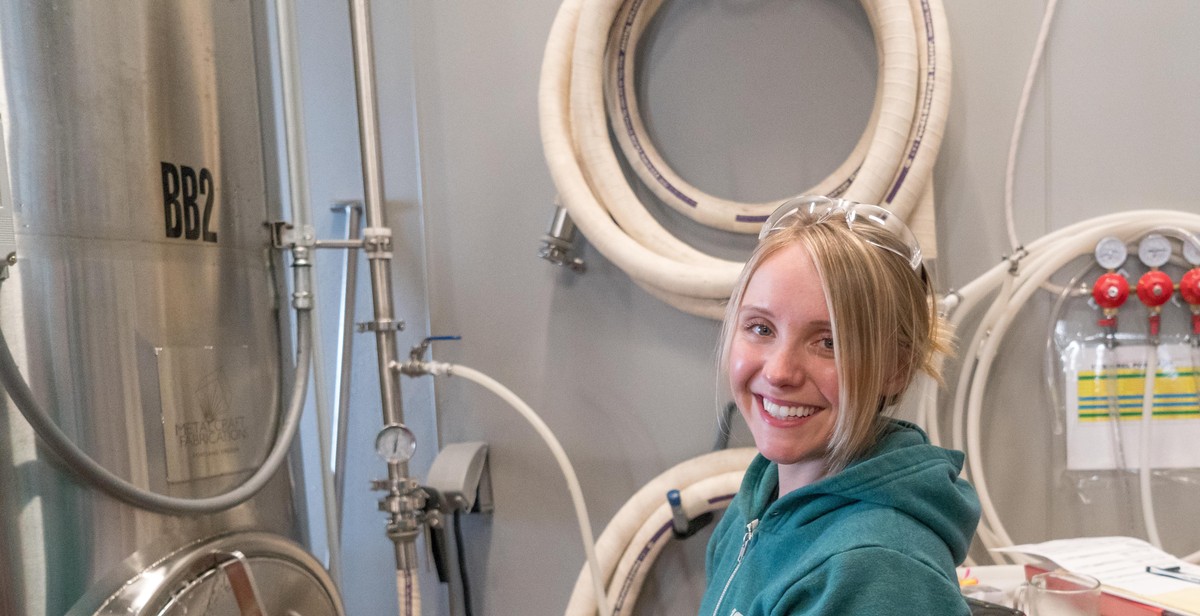How to Brew Beer with Unique Flavor Profiles: Experimenting with Ingredients
Beer brewing has been a popular hobby for centuries, and with the rise of craft beer, it has become a full-blown industry. While traditional beer recipes are always delicious, many brewers are looking to create unique flavor profiles. One way to achieve this is by experimenting with ingredients.
The Importance of Ingredients in Beer Brewing
Beer is made up of four main ingredients: water, malted barley, hops, and yeast. These ingredients are what give beer its distinct taste, aroma, and appearance. However, there are many other ingredients that can be added to create unique flavors. These ingredients can include fruits, spices, herbs, and even vegetables.
Choosing the Right Ingredients
When it comes to choosing ingredients for your beer, the options are endless. However, it’s important to choose ingredients that will complement each other and not clash. For example, if you’re adding fruit to your beer, you’ll want to choose a fruit that will enhance the flavor of the beer and not overpower it.
- Some popular ingredients for adding flavor to beer include:
- Fruit
- Spices
- Herbs
- Vegetables
- Coffee
- Chocolate
- Oak chips
Experimenting with Ingredients
The key to creating unique flavor profiles is to experiment with different ingredients. Try adding different fruits, spices, and herbs to your beer to see what works best. Keep track of what you add and the amounts so you can recreate your favorite recipes in the future.
With a little creativity and experimentation, you can brew beer with unique flavor profiles that will impress your friends and family.

Understanding Flavor Profiles
When it comes to brewing beer, understanding flavor profiles is essential to creating unique and delicious brews. There are three main ingredients that contribute to the flavor profile of beer: malt, hops, and yeast.
Malt
Malt is the backbone of beer and provides the sugars that yeast ferments into alcohol. It also contributes to the color, body, and flavor of the beer. Different types of malt can be used to create a variety of flavors and colors in the beer.
Some common types of malt include:
- Pale malt: provides a light color and mild flavor
- Caramel malt: adds sweetness and a caramel flavor
- Chocolate malt: gives a dark color and chocolate or coffee flavors
- Roasted malt: provides a smoky flavor and dark color
Hops
Hops are used in beer to balance the sweetness of the malt and provide bitterness. They also add flavor and aroma to the beer. Different types of hops can be used to create a variety of flavors and aromas in the beer.
Some common types of hops include:
- Noble hops: provide a mild, floral flavor
- American hops: give a citrus or pine flavor and aroma
- English hops: offer a spicy or earthy flavor and aroma
Yeast
Yeast is responsible for fermenting the sugars in the malt into alcohol and carbon dioxide. It also contributes to the flavor and aroma of the beer. Different strains of yeast can be used to create a variety of flavors and aromas in the beer.
Some common strains of yeast include:
- Ale yeast: provides fruity or spicy flavors and aromas
- Lager yeast: gives a clean, crisp flavor and aroma
- Belgian yeast: offers a spicy or fruity flavor and aroma
Understanding how these three ingredients contribute to the flavor profile of beer is essential to creating unique and delicious brews. Experimenting with different types of malt, hops, and yeast can lead to endless possibilities for flavor combinations in beer.

Experimenting with Ingredients
One of the most exciting aspects of brewing beer is the ability to experiment with different ingredients to create unique flavor profiles. Here are some of the key ingredients to consider:
Malt Varieties
Malt is the backbone of beer, providing the sugars that yeast ferment into alcohol. There are many different types of malt available, each with its own unique flavor profile. Some popular malt varieties include:
- Pale Malt: The most common type of malt, pale malt provides a neutral base for other flavors to shine through.
- Munich Malt: This malt adds a bready, toasted flavor to beer.
- Chocolate Malt: As the name suggests, chocolate malt adds a chocolate or coffee-like flavor to beer.
- Crystal Malt: This malt adds a sweet, caramel-like flavor to beer.
Hop Varieties
Hops are another key ingredient in beer, providing bitterness, aroma, and flavor. There are many different hop varieties available, each with its own unique flavor and aroma profile. Some popular hop varieties include:
- Cascade: This hop variety is known for its citrusy, floral aroma.
- Citra: Citra hops provide a tropical, fruity flavor to beer.
- Chinook: Chinook hops have a piney, spicy flavor and aroma.
- Centennial: This hop variety has a balanced bitterness and a floral, citrusy aroma.
Yeast Strains
Yeast is responsible for fermenting the sugars in malt into alcohol, but it also plays a role in the flavor profile of beer. There are many different yeast strains available, each with its own unique flavor profile. Some popular yeast strains include:
- American Ale Yeast: This yeast strain produces a clean, neutral flavor profile.
- Belgian Ale Yeast: Belgian ale yeast produces a spicy, fruity flavor profile.
- German Lager Yeast: This yeast strain produces a clean, crisp flavor profile.
- English Ale Yeast: English ale yeast produces a malty, fruity flavor profile.
| Ingredient | Flavor Profile | Examples |
|---|---|---|
| Malt | Sweet, Toasty, Chocolatey, Bready | Pale Malt, Munich Malt, Chocolate Malt, Crystal Malt |
| Hops | Bitter, Citrusy, Piney, Floral, Fruity | Cascade, Citra, Chinook, Centennial |
| Yeast | Clean, Spicy, Fruity, Malty | American Ale Yeast, Belgian Ale Yeast, German Lager Yeast, English Ale Yeast |
By experimenting with different malt varieties, hop varieties, and yeast strains, you can create a wide range of unique flavor profiles in your beer. Don’t be afraid to try new things and see what works best for your taste preferences.

Brewing Techniques
Mashing
Mashing is the process of converting the starches in the grains into fermentable sugars. This is done by mixing the crushed grains with hot water and holding the mixture at a specific temperature for a set amount of time. The temperature and time of the mash can affect the final flavor profile of the beer.
For example, a higher mash temperature (around 158°F) will result in a beer with a fuller body and more residual sweetness. A lower mash temperature (around 148°F) will result in a beer with a lighter body and a drier finish.
Boiling
Boiling is the next step in the brewing process. During this stage, the wort (the liquid extracted from the mash) is boiled with hops to add bitterness, flavor, and aroma to the beer. The length of the boil can also affect the final flavor profile of the beer.
A longer boil (around 90 minutes) can result in a more caramelized flavor and darker color. A shorter boil (around 60 minutes) will result in a lighter color and a less caramelized flavor.
Fermenting
Fermenting is the process where yeast consumes the sugars from the mash and produces alcohol and carbon dioxide. The temperature and type of yeast used can greatly affect the final flavor profile of the beer.
For example, using a Belgian yeast strain can result in a beer with spicy and fruity notes, while using an English yeast strain can result in a beer with a more malty flavor profile. Additionally, the temperature of fermentation can also affect the final flavor profile. A cooler fermentation temperature will result in a cleaner flavor profile, while a warmer fermentation temperature can produce more fruity and estery flavors.
| Technique | Effect on Flavor Profile |
|---|---|
| Mashing | Determines body and sweetness/dryness |
| Boiling | Adds bitterness, flavor, and aroma; affects color and caramelization |
| Fermenting | Determined by yeast strain and temperature; affects flavor profile |

Conclusion
Experimenting with ingredients is a great way to brew beer with unique flavor profiles. It allows you to create a beer that is truly your own and stand out from the crowd. Whether you’re a seasoned brewer or just starting out, there are many ingredients you can use to create a one-of-a-kind beer.
Remember these tips for experimenting with ingredients:
- Start with a base recipe and experiment with small changes
- Consider the flavor profiles of each ingredient before adding them to your brew
- Keep detailed notes on each batch you brew so you can replicate or adjust the recipe in the future
- Be patient and willing to try new things
Final Thoughts
Experimenting with ingredients is a fun and rewarding way to brew beer with unique flavor profiles. By using different grains, hops, and adjuncts, you can create a beer that is truly your own. Don’t be afraid to try new things and make mistakes along the way – that’s all part of the brewing process. So grab your brewing equipment and get started on your next batch of beer!
